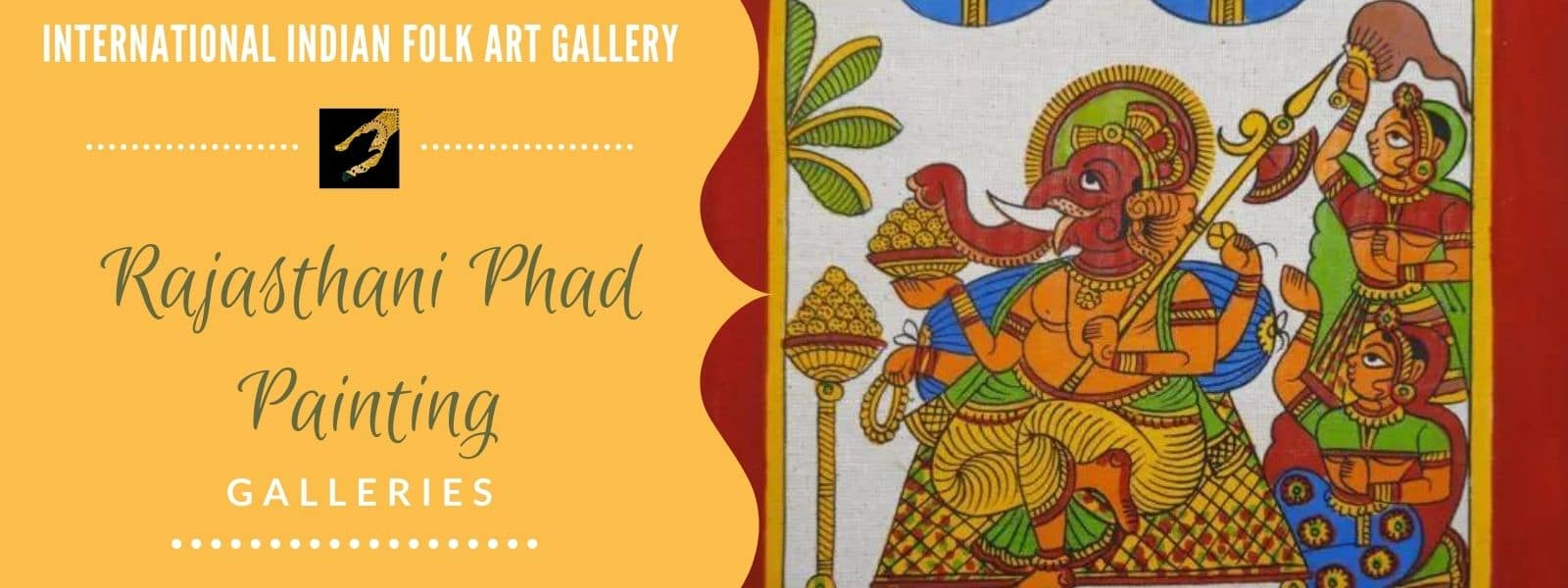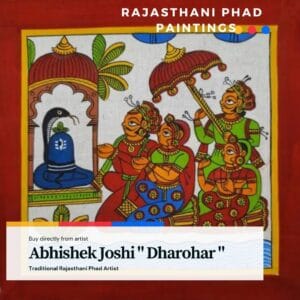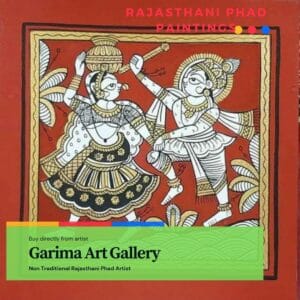Rajasthani Phad Painting
The Rajasthani Phad Paintings, Indian folk art dates back to a 700-year-old legacy and they get their name because of the way they were traditionally rolled or folded. These are created using the scroll technique. The paintings depict local tales by scrolling up & down, representing both sides of the story. They were carried around by priests who would sing out the stories to set them in motion
Rajasthani Phad painting is an Indian folk art style of religious scroll painting. It’s mainly practiced in Rajasthan and usually done on a long piece of cloth or canvas, which is called phad.
The stories of the gods from Rajasthan – mostly Pabuji and Devnarayan – are shown on these ‘phads.
The Bhopas, folk singers traditionally carry the painted phads along with them and use these as mobile temples for worship; they’re used by the Rebari community of the region.
The Phads (flags) of Pabuji and Devnarayan are normally about 15 and 30 feet respectively. Traditionally the flags were painted with vegetable colors.
Previously, Phad painting was practiced exclusively by the Joshi community. It is understood the Phad paintings made in Jaipur lacked the vibrancy and aesthetics that was present in the paintings made by Joshi families of Bhilwara and Shah Pura. Abhishek Joshi, 13th generation Shah Pura Joshi family artist now teaches Phad painting through his online E-learning courses, also runs many workshops.
In 1960, Shree Lal Joshi opened a school called the Joshi Kala Kendra to teach students from various castes how to paint this art style. The name of the school eventually became Chitrashala.
The Devnarayan Ki Phad and Pabuji Ki Phad are traditional forms of this art. They were revolutionized by Shree Lal Joshi and Pradip Mukherjee in the 1980s. Mukherjee’s paintings are based on the stories of Ramcharitmanas, Gita Govinda, and Kumārasambhava.
Shree Lal Joshi introduced and composed new themes for this traditional Indian folk art form, based on the episodes of the Devnarayan Mahagatha, the battle of Haldighati and the jauhar (self-immolation) of Padmini, the lives of Maharana Pratap, Prithvi Raj Chouhan, Rani Hadi, Padmini, Dhola Maru, Amar Singh Rathore, Buddha, Mahavira and the narratives from the Gitagovindam, the Ramayana, the Mahabharata and the Kumarasambhava.
P. Mukherjee created 108 miniature paintings of the Ramcharitmanas, each measuring 11″ x 8″. Each one had 6 to 8 panels, with different scenes portrayed. This was the first time these elements had been included in Indian painting.





